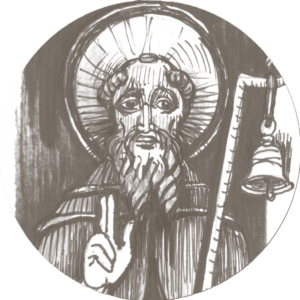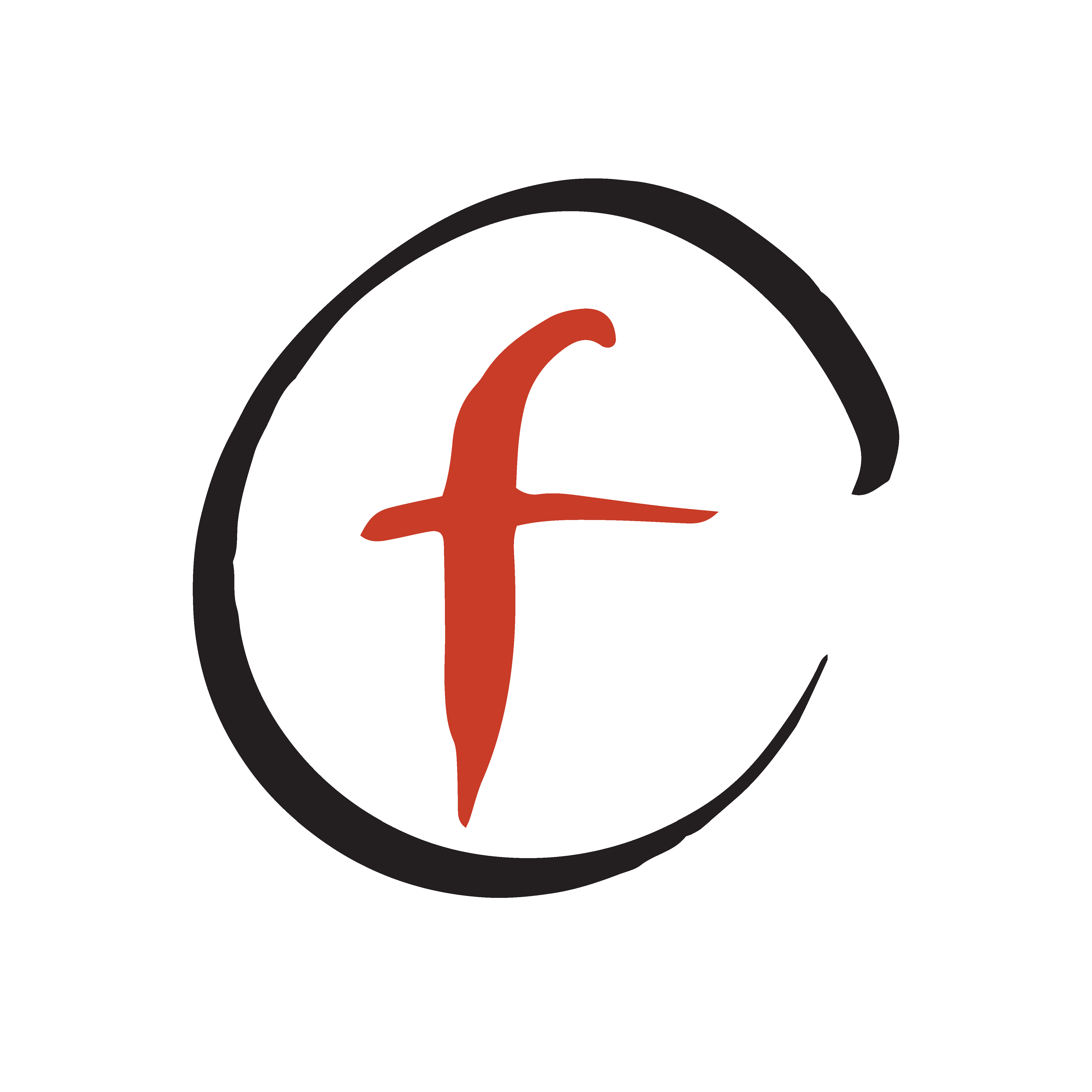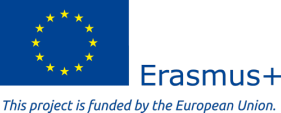Medieval forms of Irish were widely spoken throughout Ireland and also in large parts of Scotland. The earliest (partially) attested form is Primitive Irish (c 400-600 AD), followed by Old Irish (c 600-900), Middle Irish (c 900-1200) and Early Modern Irish (1200-1650). Middle Irish is the forebear of modern Irish, Manx and Scottish Gaelic, which began to differ in their spoken form already in the late medieval period, but continued to share a common written standard until the seventeenth century.
Language
The Lord's Prayer in Old Irish (Lebhar Breac, 15th c.)
A athair fil hi nimib, noemthar thainm.
Toet do flaithius.
Bid do toil i talmain amal ata in nim.
Tabhair dún indíu ar sásad cech laithi.
Ocus log dun ar fiachu amal logmaitne diar fhéchemnaib.
Ocus nirlecea sind in amus ndofulachtai.
Acht ronsóer ó cech ulc.
Ropfír.
The earliest extant Irish transl. of the Pater is found in Lebhar Breac (The Speckled Manuscript, 15th c), the largest Irish vellum manuscript written by one scribe. It contains religious and biblical material, including the lives of St Patrick and St Brigid, the Litany of Our Lady, but also a history of Alexander the Great.
According to the early medieval grammatical tract Auraicept na nÉces (The Scholars’ Primer), Irish was created by the legendary Scythian king and sage Fénius Farsaid out of the seventy-four languages that originated after the fall of the Tower of Babel. It thus contains “every obscure sound that existed in every speech and every language”. Comparative linguistics tells a much more mundane origin story – Irish simply belongs to the Q-Celtic (Goidelic) branch of insular Celtic languages. Nevertheless, it is true that its medieval forms, especially Old Irish, are notorious for their complexity – even J.R.R. Tolkien, a notable polyglot well versed in a number of medieval languages, abandoned his efforts to learn Old Irish and developed a dislike for the language!
Among features that Old Irish shares with its modern descendants we can name combinations of prepositions with personal pronouns (e.g. dom = for me) or initial consonant changes dependent on a number of complex grammatical rules. In addition, Old Irish uses infixed pronouns to mark the object of the verb (cf. fo-gaib = he gets, fo-m-gaib = he gets me, fo-t-gaib = he gets you ). The biggest challenge for the learner, however, is the verbal system, which displays a high degree of irregularity – in fact, completely regular verbs are quite a rare species. A suitable (though a bit extreme) example is the verb téit (he goes), which appears in the subjunctive as do-coí, in the future as regaid, in the preterite as luid and in the perfect as do-cuaid. Fortunately, the language developed a number of strategies to avoid verbs with a too specific meaning using constructions with prepositions and verbal nouns. Also, medieval forms of Irish tend to be, after some study, quite accessible to speakers of modern Goidelic languages, as the vocabulary has not changed that much over the centuries (in marked contrast with English, for instance). With some patience, the language is learnable, although true precision requires decades of practice. The reward is the access to a literary corpus unparalleled in the context of medieval Europe.
Script
The earliest traces of Irish are found in ancient inscriptions using the ogam alphabet, a system of markings consisting of strokes and notches etched onto stone or wood surfaces. These inscriptions are usually datable to the fourth or fifth century AD and contain mainly personal names in Primitive Irish. Nevertheless, ogam script is treated in a number of later scholarly manuscripts including Auraicept na nÉces, where the various letters are typically given names according to trees or shrubs.
The earliest surviving Irish book in Roman alphabet is the sixth-century psalter called the Cathach (Battler). Allegedly, the manuscript was written by St Columba, who illicitly copied it from his teacher St Finnian, thus causing the first copyright dispute in Ireland. The oldest Irish manuscripts, including the famous illuminated volumes such as the Book of Kells, are in Latin, with Irish starting to appear only in the eighth century in glosses to Latin texts preserved in continental monasteries. In one of such manuscript, written in Reichenau in Germany, we can find the notable poem Pangur Bán, in which a scholar compares his intellectual efforts to the pursuit of mice by his beloved white cat. The first extant manuscript containing (almost) exclusively Irish-language material dates from the twelfth century and is called Lebor na hUidre (The Book of the Dun Cow) based on the legend that it was written on the vellum obtained from St Ciarán’s favourite cow.
The version of Roman alphabet used in Ireland, insular minuscule, eventually spread to England and mainland Europe, where it influenced the scribal practices at Charlemagne’s court. In vernacular manuscripts, insular minuscule uses diacritics to mark the length of syllables and certain sound changes in consonants. It is also distinguished by an elaborate system of scribal abbreviations, often derived from Latin, which means that reading the manuscripts requires some practice.
Literature
The medieval Irish literary corpus is vast and extremely versatile. While most of the texts are preserved in manuscripts compiled from the twelfth century onwards, many of them can be dated, on the basis of their language, to the Old Irish period. The first extant Irish poem is possibly Amra Choluim Cille (The Elegy for St. Columba), written, according to a later manuscript, by Dallán Forgaill in 597.
The various medieval literary traditions persisted long into the seventeenth century, which adds to the bulk and complexity of the corpus. The literature includes religious texts, such as the biographies of the island’s numerous saints, tracts on law, grammar and poetic metres, translations from Latin, various kinds of poetry as well as a substantial number of epic tales.
An important branch of learning in medieval Ireland was dinnsenchas, or placename lore – in many collections, we can find tales associated with mountains, rivers, wells, beaches, as well as human settlements.
The literature likes to combine styles and genres – a typical epic tale thus contains both narrative prose and poetry, as well as a number of learned or gnomic passages. The epic literature is traditionally divided, based on subject matter, into various cycles. The Mythological cycle tells the (pseudo-) history of Ireland, incorporating a number of originally Celtic pagan deities. Other tales revolve around distinctive groups of heroes, thus forming the so-called Ulster cycle, the Fenian cycle and a number of small cycles focusing on semilegendary kings. Among the most accomplished literary works we can find the epic Táin Bó Cuailnge (The Cattle Raid of Cooley), which tells about the hero Cú Chulainn’s single-handed defence of the province of Ulster against queen Medb’s army, or the curious tale Buile Suibhne (Sweeney’s Madness), featuring a cursed king who becomes insane, flees from battle, grows feathers and composes moving nature poetry while perching on trees or feasting on watercress.
The longest medieval text is the Middle Irish Acallamh na Senórach (Colloquy of the Ancients), where surviving members of earlier heroic warrior-hunter bands (Fenians) meet St Patrick, travel through Ireland and in their conversation, create an intriguing web of tales about heroism, magic and life in the open.
Importance of the language
From the seventeenth century onwards, Irish started to yield to the pressure of English, which eventually became the dominant language in Ireland. In the process, however, it significantly influenced the form of English spoken in Ireland as well as the output of Irish writers such as William Butler Yeats, John Millington Synge, James Joyce and Flann O’Brien. At the same time, it was revived at the turn of the nineteenth and twentieth century and continues to exist as a minoritised language on the island, giving rise to a considerable literary output as well as recent popular films such as An Cailín Ciúin (The Quiet Girl) or Kneecap. The Fenian cycle, through the mediation of James Macpherson’s forgeries, became a major influence on European Romanticism, bringing along the themes of youth, nature and nostalgia for the past. More recently, Irish folklore and legends, often traceable to the Middle Ages, have become a crucial component in the development of modern fantasy – if we explore the work of the genre’s founding fathers, we quickly find out that J.R.R. Tolkien’s legendarium was partly influenced by the eleventh century Lebor Gabála Érenn (The Book of Invasions) and C.S. Lewis’s The Voyage of the Dawn Treader closely follows the pattern of the Old Irish genre of Immram (voyage) tales, which tell about wondrous adventures at sea.
Interesting facts
The medieval Irish scribes can be credited with an important invention – spaces between words. The Latin tradition of scriptura continua (continuous script) did not suit the Irish, who were not native speakers of Latin, and their invention was gladly adopted by English and continental scribes.
Some Latin words entered English via Irish. One example is cross, coming from Latin crux, changed into cros in Old Irish. An even more intriguing instance is clan, traceable to the old Irish cland (offspring), which is, in turn, derived from the Latin planta (a sprout). The same Latin word, of course, gave rise to Modern English plant – words sometimes travel through unexpected pathways.






